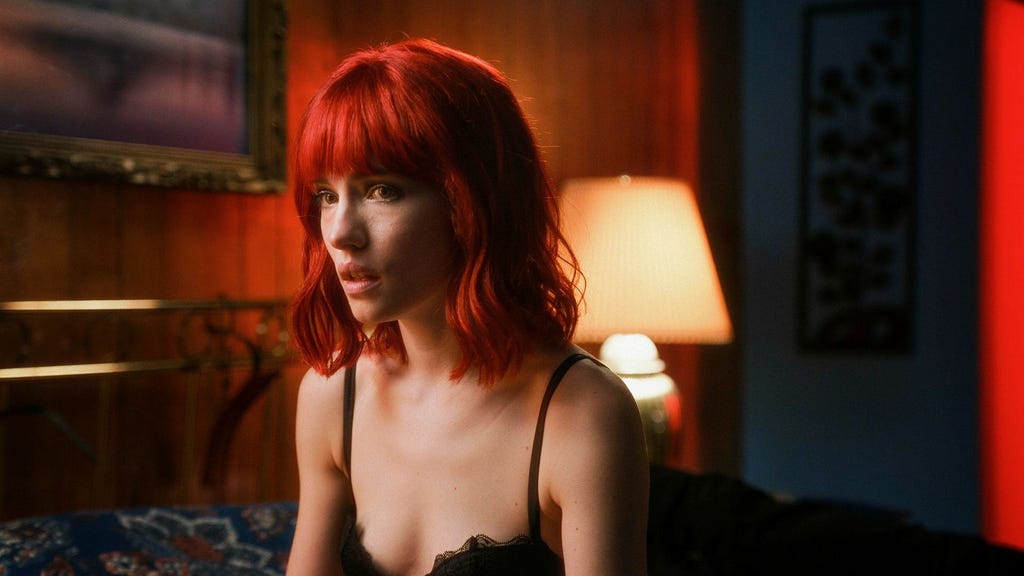”Strange Darling,” a film steeped in 90s nostalgia and buzzing with hype, can be interpreted as a Tarantino-esque response to the #MeToo movement. It blends sweaty sex scenes, graphic violence, a serial killer narrative, and a frenetic, fractured storytelling style. While momentarily entertaining, the film ultimately struggles to transcend its stylistic influences and thematic ambitions, leaving a lingering sense of superficiality despite its provocative elements. This analysis delves into the various aspects of the film, exploring its strengths and weaknesses, and examining its potential as both a commentary on societal issues and a piece of cinematic entertainment.
The film’s most striking characteristic is its deliberate emulation of Quentin Tarantino’s signature style. From the non-linear narrative structure to the snappy, profanity-laced dialogue and the stylized violence, the influence is undeniable. The film revels in its homage, employing similar cinematic techniques like close-ups, split screens, and a soundtrack laden with retro tunes. However, while ”Strange Darling” effectively captures the surface aesthetics of Tarantino’s work, it fails to replicate the depth and complexity of his character development and thematic explorations. The film’s characters, while engaging in witty banter and engaging in shocking acts, often feel like caricatures rather than fully realized individuals, ultimately hindering the emotional impact of the narrative.
The #MeToo movement’s influence is woven into the narrative, although not always with subtlety. The film presents a world where female characters navigate a landscape fraught with predatory men and societal expectations that often silence their voices. While the film attempts to empower its female protagonists by portraying them as agents of their own destiny, often resorting to violent means, the exploration of these themes feels somewhat exploitative. The graphic depictions of sexual violence and aggression, while potentially intended to shock and provoke discussion, risk overshadowing the nuanced exploration of female agency and the complexities of trauma. The film struggles to strike a balance between portraying the harsh realities of a patriarchal society and providing a truly empowering narrative for its female characters.
The narrative’s fragmented nature, while contributing to the film’s overall stylistic flair, ultimately detracts from its coherence. The constant jumps between timelines and perspectives, while intended to create suspense and intrigue, can become disorienting and detract from the emotional investment in the characters’ journeys. The interwoven storylines, while thematically linked, often feel disconnected, preventing a deeper understanding of the characters’ motivations and relationships. This narrative fragmentation ultimately undermines the film’s potential for a more profound exploration of its central themes.
The performances, while energetic and committed, ultimately struggle to overcome the limitations of the script. The actors embrace the heightened reality and stylistic excesses of the film, delivering their lines with the requisite swagger and intensity. However, the lack of depth in the character development prevents the actors from fully inhabiting their roles and exploring the emotional complexities of their characters’ experiences. This results in performances that, while entertaining, lack the nuance and emotional resonance necessary to elevate the film beyond its stylistic trappings.
”Strange Darling,” while undeniably a visually stimulating and audacious piece of filmmaking, ultimately falls short of its potential. The film’s reliance on stylistic imitation and its uneven handling of complex themes prevent it from achieving the depth and impact it seemingly aspires to. While the film’s exploration of female agency in a patriarchal society and its engagement with the #MeToo movement are commendable, its execution often feels superficial and exploitative. The fragmented narrative and underdeveloped characters further detract from the film’s overall effectiveness, leaving the audience with a sense of unfulfilled promise despite its moments of visceral excitement and stylistic flair. While entertaining in the short term, the film lacks the substance to resonate beyond its immediate impact, ultimately positioning it as a stylish but ultimately hollow exercise in genre filmmaking.














